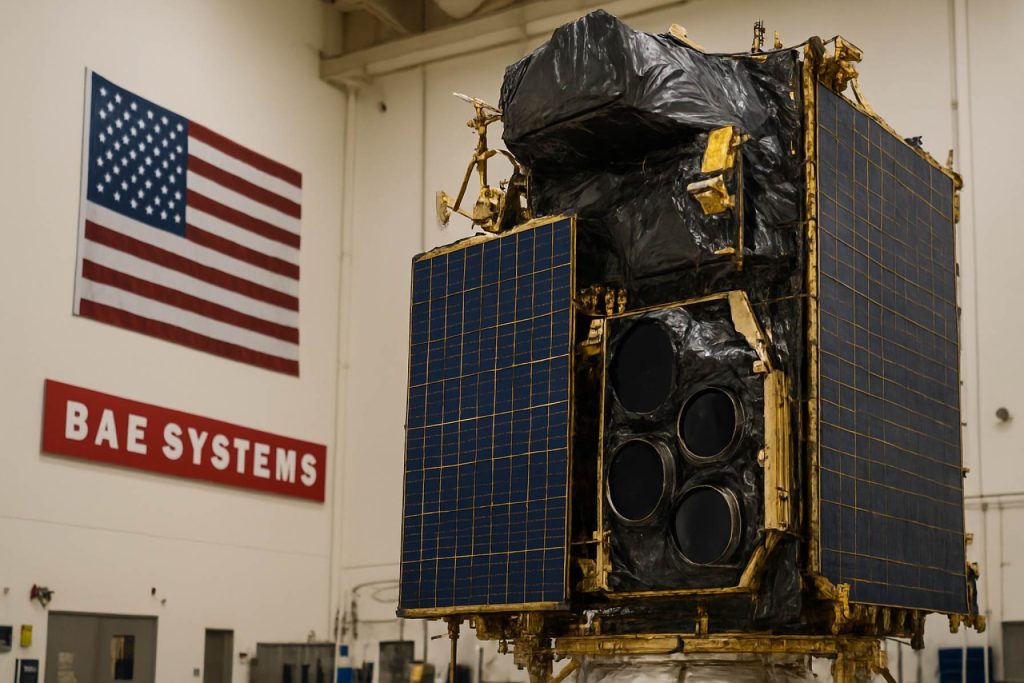
BAE Systems Scoops Up $1.2 Billion Deal to Build Next-Gen Missile Tracking Satellites for Space Force—Here’s What This Means for U.S. Defense in 2025
BAE Systems secures Space Force contract to supply high-tech missile-tracking satellites—discover what’s next for America’s security in space.
- $1.2B contract awarded to BAE Systems for new missile-tracking satellites
- 10 satellites to be designed and built in Broomfield, Colorado
- 4 years for satellite delivery; 5 years for operations and support
- One-team approach integrates payload, bus builds, and ground management
BAE Systems Inc. Space & Mission Systems—fresh off its acquisition of Ball Aerospace—just clinched a massive $1.2 billion deal. The contract, awarded by the U.S. Space Systems Command, arms America with 10 advanced missile-tracking satellites designed to secure national interests against rising global threats.
The high-stakes project positions BAE Systems as the prime contractor for the Resilient Missile Warning & Tracking (RMWT) – Medium Earth Orbit (MEO) Epoch 2 program. Their mission? Redefine how the U.S. Space Force tracks and manages missile threats from orbit, setting a new standard for integrated satellite defense through 2025 and beyond.
What Makes This Satellite Deal a Game-Changer?
The contract aims to turbocharge the nation’s ability to detect and respond to missile launches—faster and more accurately than ever.
– BAE’s satellite platforms will utilize cutting-edge infrared and sensor technology.
– The one-team concept merges spacecraft construction, ground systems, and operational support into a streamlined process.
– This leap in tech supports the Pentagon’s growing focus on missile defense in a rapidly shifting geopolitical climate, with more nations, including China and Russia, escalating their missile capabilities.
Discover more about U.S. defense technology at the Department of Defense.
Q: How Fast Will These Satellites Be Deployed?
The agreement requires BAE Systems to deliver all 10 satellites within four years. After launch and deployment, BAE will handle satellite operations and support for an additional five years, ensuring seamless surveillance from medium earth orbit.
BAE’s vice president of Space & Mission Systems, Thai Sheridan, underscores that their program will maximize reliability by synchronizing teams across every phase—from design to long-term maintenance.
Q: Why Does the Space Force Need New Missile Tracking?
The evolving landscape of missile threats, particularly hypersonic weapons, demands quicker, more resilient detection methods. Medium Earth Orbit satellites bridge the gap between low and high orbits, offering a strategic perspective with broader coverage and reduced vulnerability to anti-satellite weapons.
Learn more about space initiatives at the U.S. Space Force and global aerospace developments at NASA.
How Will This Impact U.S. and Global Security?
The deployment is expected to:
– Strengthen early missile warning capabilities
– Improve coordination across military space assets
– Reinforce U.S. leadership in space-based missile defense technology
Defense analysts see this as a pivotal step as space becomes the newest frontier for national security, competition, and deterrence.
How Can Other Contractors Compete in This Arena?
Experts note that the scale and integration of BAE’s solution raise the bar for future contracts. As the U.S. invests more in space defense, companies will need to blend innovation with operational excellence to secure similar deals.
Interested in the future of missile defense? Check aerospace breakthroughs at Lockheed Martin and emerging tech at SpaceX.
Ready to See the Future of Space Defense Unfold?
Stay updated as BAE Systems shapes the next generation of U.S. missile defense satellites. Watch for launches, technology reveals, and evolving industry impacts.
Actionable Summary:
- Monitor BAE’s satellite rollout through official U.S. Space Force channels.
- Follow new technology releases that impact missile detection and tracking.
- Stay informed on government contracts and industry leaders in space defense.
Bookmark this page for major updates on U.S. missile defense and space security in 2025!



